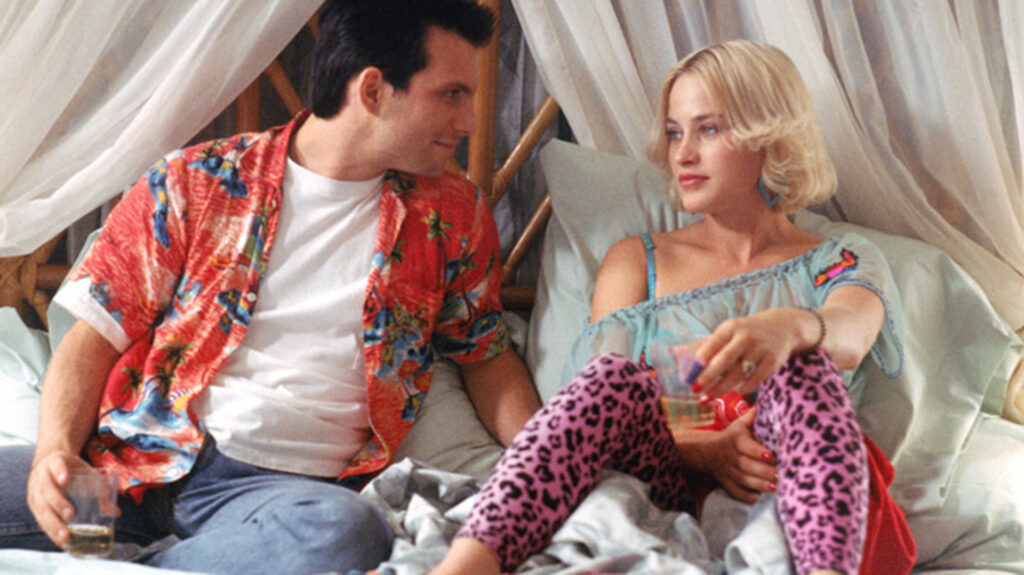
It always surprises me how well Tony Scott’s style as a director suits Quentin Tarantino’s script for True Romance (1993). Scott imbues every scene, action sequences and otherwise, with such kinetic energy that he almost seems better suited to directing Tarantino than Tarantino does.
It had been a long time since I saw this film. It surprised me how quickly I got caught up in the story of Clarence and Alabama (Christian Slater and Patricia Arquette). Then it occurred to me that, of all Quentin Tarantino has written, True Romance might be his least pretentious screenplay. Similar to his masterpiece Jackie Brown (1997), True Romance is concerned with characters first and genre mechanisms second. For my money this is when Tarantino is at his best. When he isn’t indulging in his own fantasy or showing off his knowledge of movies via an endless stream of visual quotations that often render his films as a kind of “jukebox meta-movie”.
Tony Scott is just as much an author of True Romance as Tarantino is and, like Tarantino, Scott’s style is often so strong that it overwhelms the rest of the picture. Luckily, True Romance is an exception. Scott brings a glossiness to the images and an urgency to the cuts that keep the viewer engaged enough, and proceedings moving fast enough, that the more cliched aspects of the film streak by without being noticed.
True Romance is one of a handful of neo-noir/action/road movies that came out in the early nineties. Wild At Heart (1990) really set a tone that these films followed of which True Romance is definitely one of the best films (in this pseudo sub genre), along with Jeffrey Reiner’s Trouble Bound (also released in 1993 and starring Patricia Arquette). These films, though definitely unified by certain genre tropes and violence, represent a resurgence of a very particular kind of adolescent fantasy that dominated drive-in features of the early and mid-seventies with films like Gone In Sixty Seconds (1974) and Wanda (1970).
